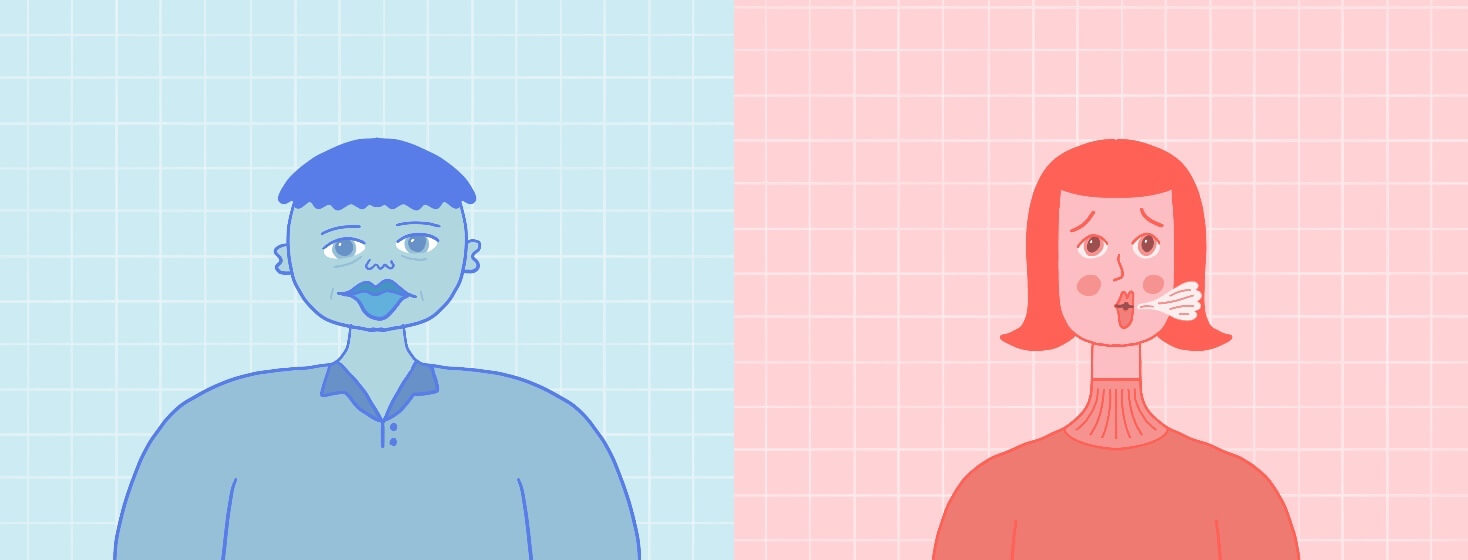What Are Blue Bloaters And Pink Puffers?
Listed here are some older terms used to describe COPDers. Rarely are they seen in medical literature these days. But, occasionally I’m asked about them by patients. The terms I’m referring to here are blue bloaters and pink puffers. So, here’s our COPD Lexicon blue bloater and pink puffer edition.
Blue bloaters
Blue bloater is a generalized term referring to a person who is blue and overweight. They usually present with shortness of breath and they have a chronic cough. It’s an old term for what we would now recognize as severe chronic bronchitis.
By blue, we mean the skin around their lips and fingertips. Today we refer to the bluish-colored skin as cyanosis. Or, when it’s present on the lips and fingertips, we refer to it as acrocyanosis. It’s a sign that a person has low oxygen levels.
When blood oxygen levels are low, your body naturally shunts blood from non-vital organs (fingertips and lips) to vital organs (lungs, heart, and brain). This is a good mechanism, as it is sometimes needed to keep us alive. A sign of this happening is cyanosis.
They are also overweight and have swollen feet, ankles, and legs. They may also have large neck veins. Today we know these are signs of right heart failure or cor pulmonale. This happens when the heart poops out after years of pumping blood through diseased lungs.
There are three potential reasons the term blue bloater is rarely used today. One is science has given us more accurate terms, like cyanosis and chronic bronchitis. Two is because most people with cyanosis are treated with supplemental oxygen. So, this makes sure their oxygen levels stay up and their skin stays pink.
Three is because it’s sort of a blunt term. It’s not a nice term. It’s definitely not “politically correct” so to speak. So, it has been phased out as an acceptable medical term. You will rarely see it used in modern medical literature.
Pink puffers
Pink puffer is a generalized term for a person who is thin, breathing fast and is pink. They usually present with shortness of breath and pursed lip breathing. It’s an old term for what we would now recognize as severe emphysema.
By pink, we mean the color of their skin. Like blue bloaters, they have trouble oxygenating. But, their bodies compensate for this by increasing respiratory rate. This assures that tissues are adequately oxygenated. But, because they are breathing so fast, this makes their skin look pink.
They usually have large chests. This used to be called a barrel chest. Take in a deep breath and hold it. This is what a barrel chest looks like. It looks like the person’s chest is always in the inhale position. It gives the appearance of a barrel, hence the name. It happens when air gets trapped inside your lungs. Air gets in but some of this air cannot get back out. So, this is a common feature of severe emphysema.
They also use pursed lips. This is an effort to slow down their expiratory phase. This is needed to help them get air out of their lungs. It can help them feel less short of breath.
Emphysema and chronic bronchitis
It is now understood that most people with COPD have a combination of both emphysema and chronic bronchitis. So, this kind of makes old terms like blue bloater and pink puffer obsolete. They have become inaccurate stereotypes. But, if you come across these terms in old literature, now you know what they mean.
Community Poll
Do you have an exercise routine?

Join the conversation